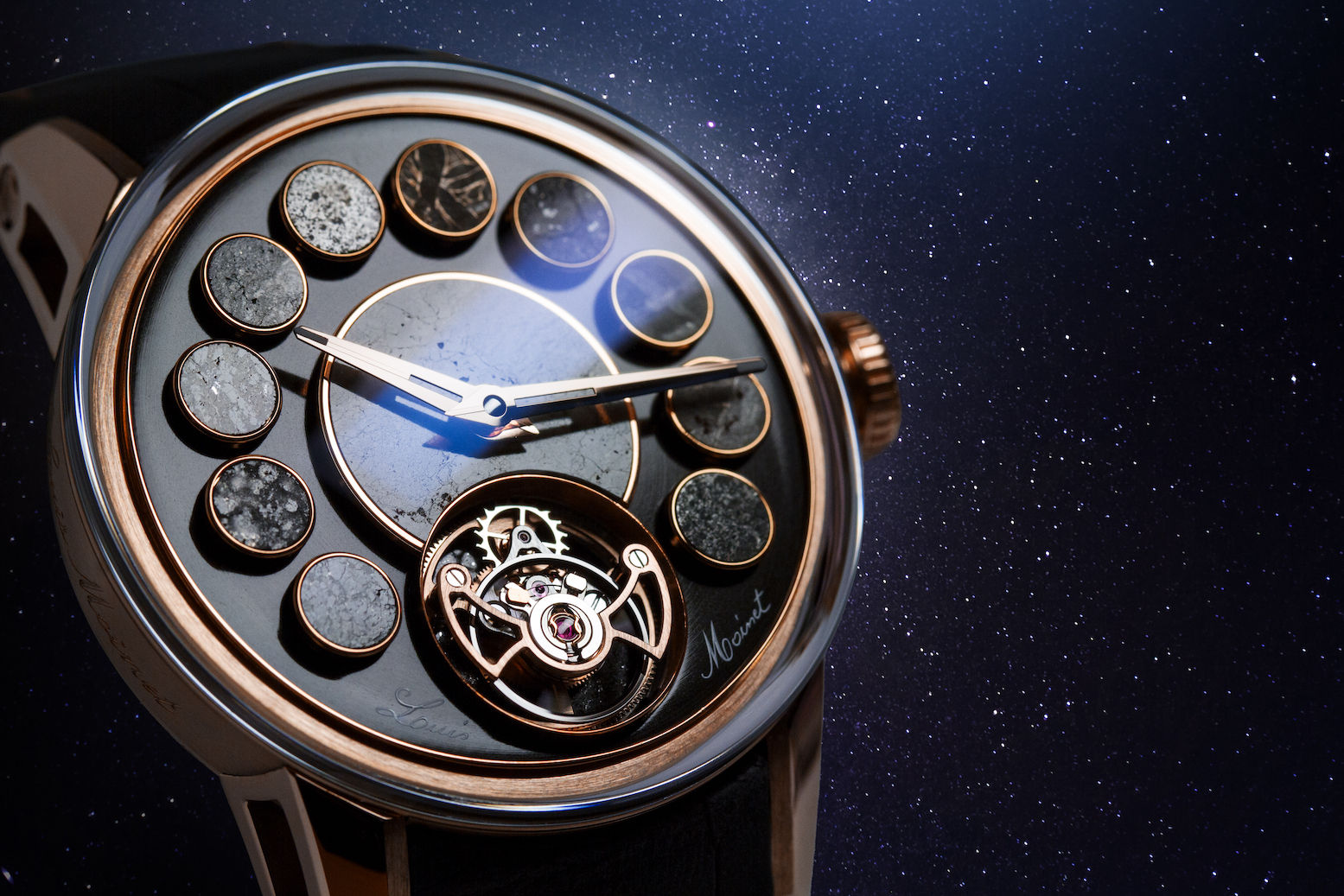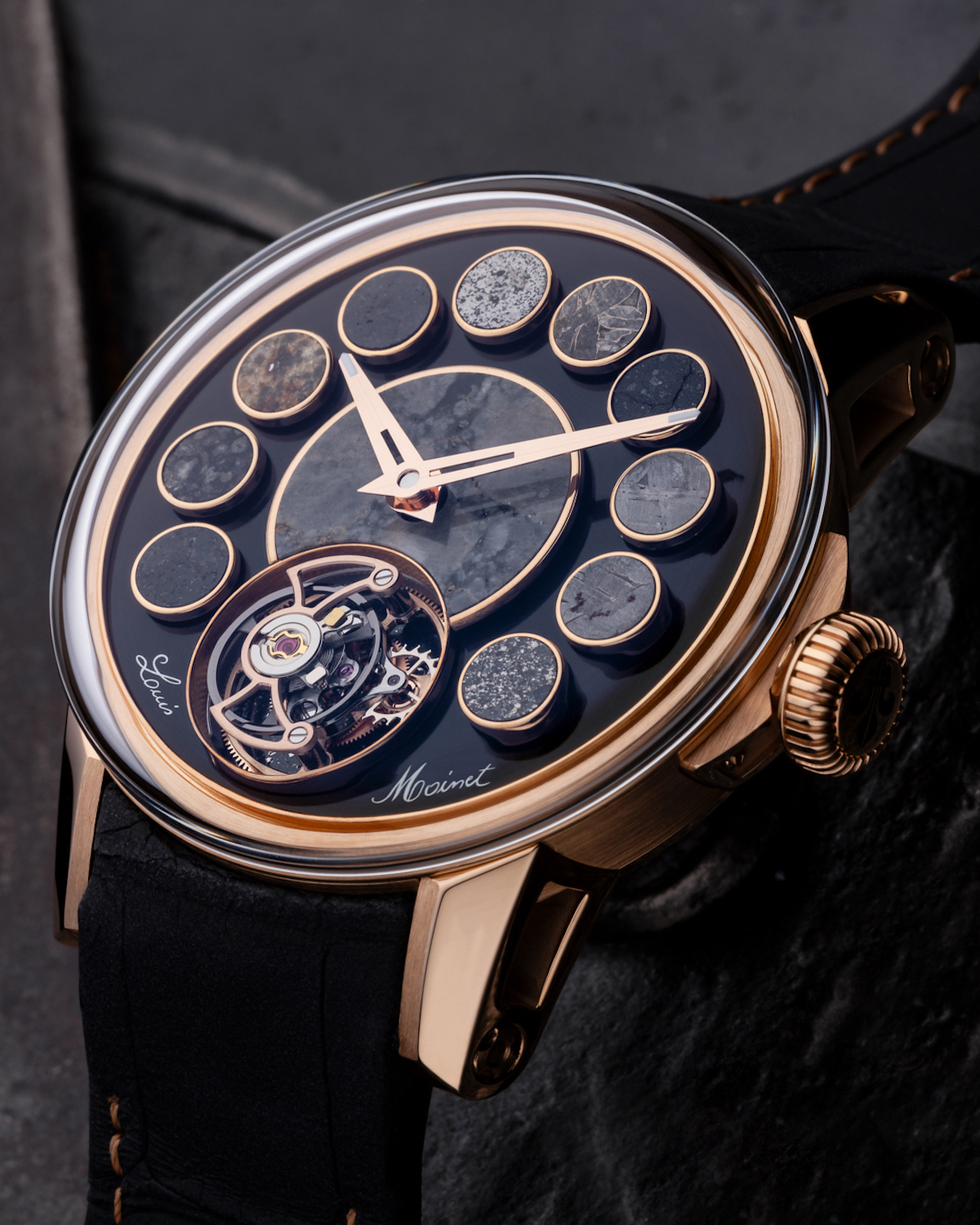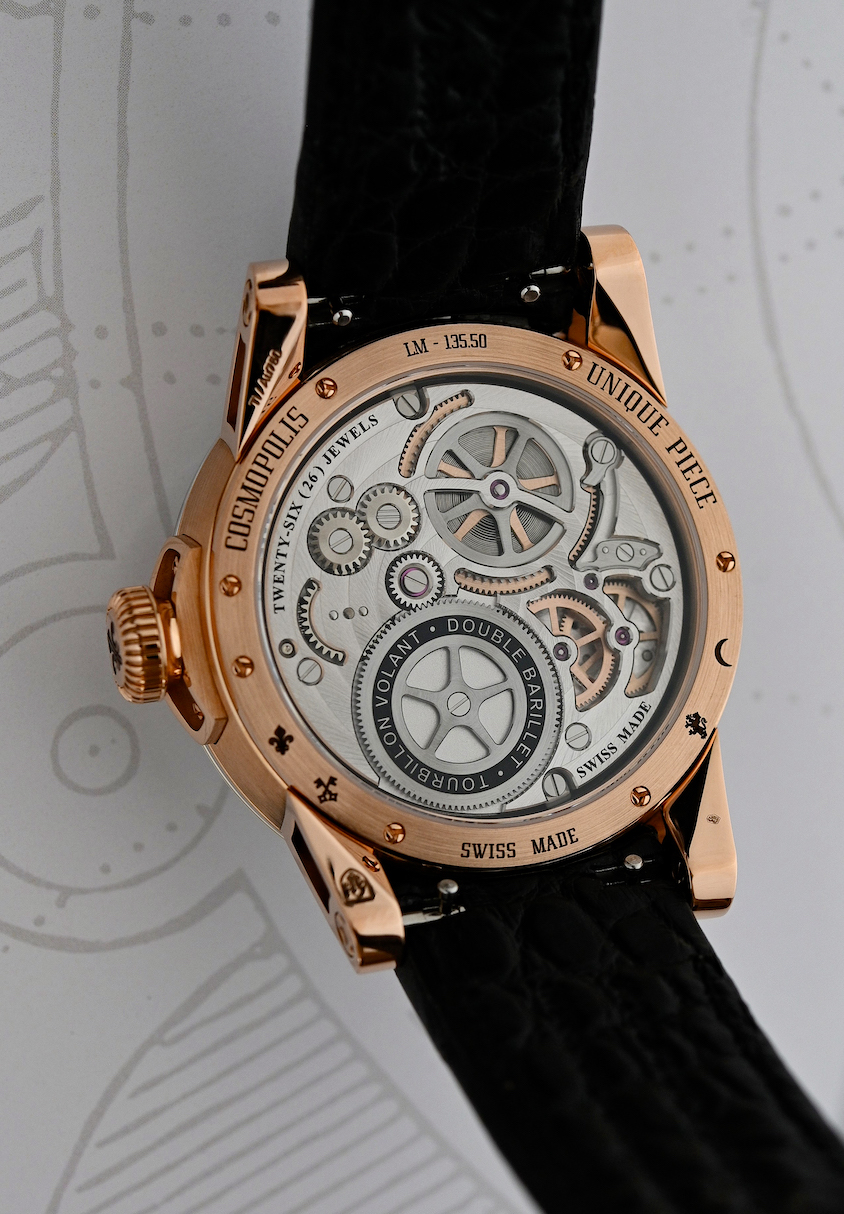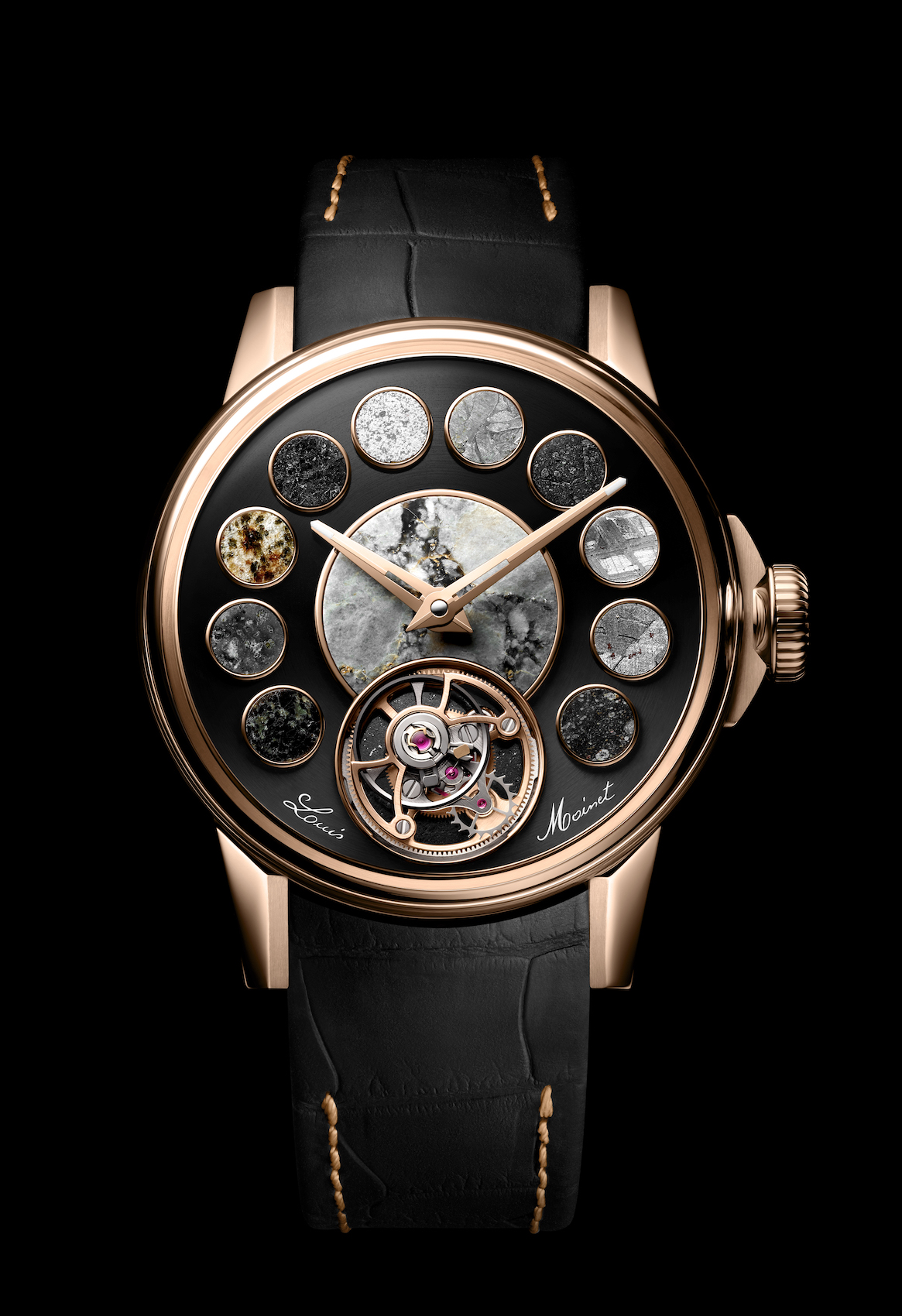(Portions of this article by Roberta Naas first appeared on Forbes.com).

Louis Moinet Cosmopolis awarded “Watch with the most Meteorites” by Gunness World Records.
It’s no surprise that the genius behind Louis Moinet watch brand has made another Guinness World Record milestone — especially since the new Cosmopolis was 20 years in the making .Officially unveiled in Geneva last week at the Musée d’Histoire des Sciences, the all new Cosmopolis watch from Les Ateliers Louis Moinet is the culmination of 20 years of searching for and collection the dozen different meteorites used in its making. Jean-Marie Schaller, owner and creative director of Louis Moinet, includes 12 fragments from 12 different meteorites in this complicated flying tourbillon timepiece that was awarded the “Most meteorite inserts in a watch” by the Guinness World Records.
“Even more than a great watchmaking work, Cosmopolis is a historic and scientific journey, a microcosm of the macrocosm,” says Schaller.

Louis Moinet Cosmopolis boasts 12 different meteorites on the dial.
Each of the 12 meteorites, some older than Earth, has its own story, which fascinated Schaller as he collected the pieces. He decided the best way to showcase them was in a spectacular timepiece that incorporates space and time. The dial is like a celestial theater, with each fragment purposefully placed to create a spectacular constellation.
The rarest and most captivating stone occupies the center of the dial and is a lunar meteorite. Another carefully placed stone is a black chondrite located in the back of the tourbillon cage. The other 10 disks of meteorite are placed around the dial – acting as markers.
The 18-karat 5N rose gold watch measures 40.7mm in diameter and offers hours, minutes and a flying tourbillon at 6:00. The hand-wound movement that powers it boasts a double barrel to offer 96 hours of power reserve. The barrels are placed one upside down over the other so they can deliver their energy simultaneously for longer lasting reserve.

Louis Moinet Cosmopolis houses a flying tourbillon movement.
The 12 meteorites included in this exceptional timepiece hail from the moon, Mars, a host of asteroids and a meteorite shower in Mexico. They include: The Lunar meteorite, Dhofar 461, a very rare specimen with white speckled interior; Martian meteorite, Dhofar 1674, from Mars and found near Dhofar, Oman. It is one of the rarest Mars meteorites and has a slight green texture. Allende meteorite from a meteorite shower in Mexico is the most studied meteorite in history and has been dubbed the “Rosetta Stone” thanks to the information it has provided. It is estimated to be 4.567 billon years old and the oldest rock in the solar system.
Others include an asteroid found in Algeria, Erg Chech meteorite, Jbilet Winselman meteorite found in Morocco and containing amino acid traces (the first known traces of life in the cosmos), Isheyevo meteorite found in Russia, an extraterrestrial mix of iron and nickel in the form of the Aletai Armanty meteorite found in China, and more. In fact, the list reads like a collection of rarities from around the world – all gracing the dial of this special unique timepiece.

It took 20 years to amass the dozen different meteorites that are included in the Louis Moinet Cosmopolis.
“I’ve been collecting exceptional meteorites for twenty years. Each has its own story. My collection contains rare pieces, like the lunar meteorite Dhofar 461, which is known for its white-speckled interior. And I have a valuable meteorite from Mars that is one of 300 samples identified to this day. I also have the famous Allende, the oldest rock in the solar system, and Erg Chech, the oldest magmatic rock known, which comes from a protoplanet that vanished at some point,” says Schaller. “As for the Jbilet Winselwan, what makes it remarkable are the traces of amino acid, which might well be the first signs of life in the cosmos. The Sahara 97093, on the other hand, distinguishes itself through its micro-diamonds, which took shape at the heart of stars explode and become supernovas. These fascinating stories were the creative spark that gave birth to the Cosmopolis.”





